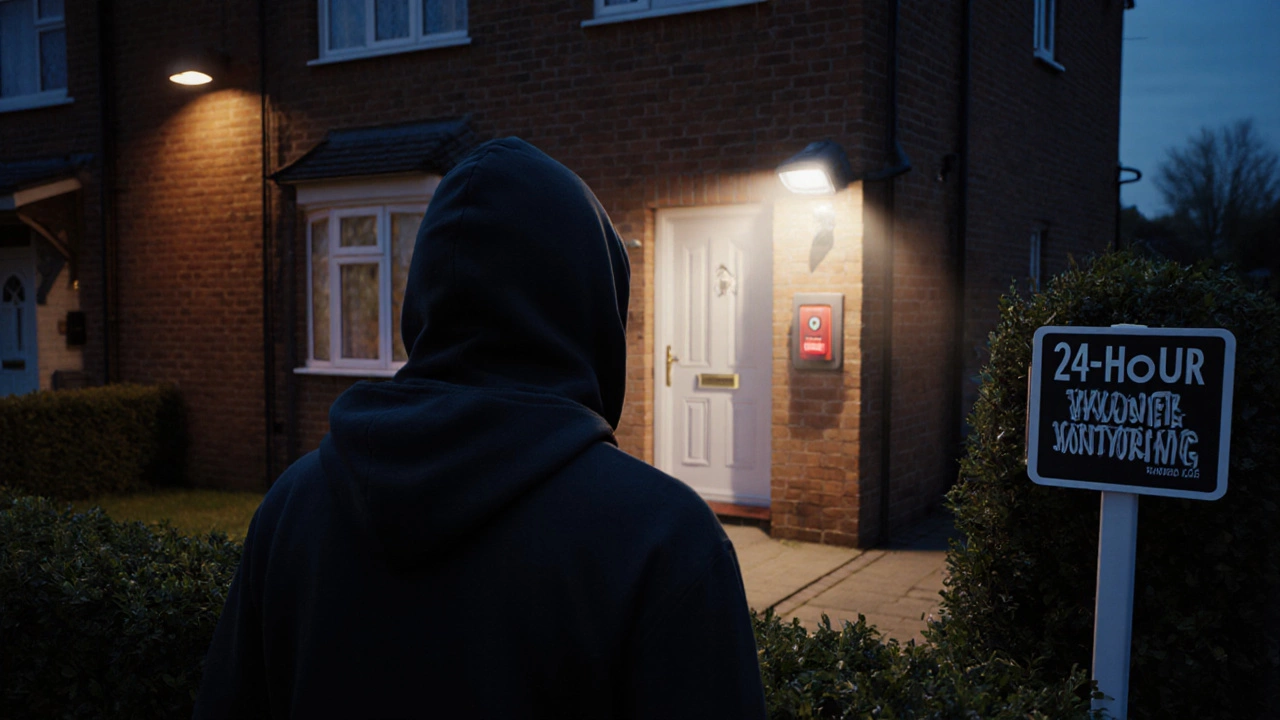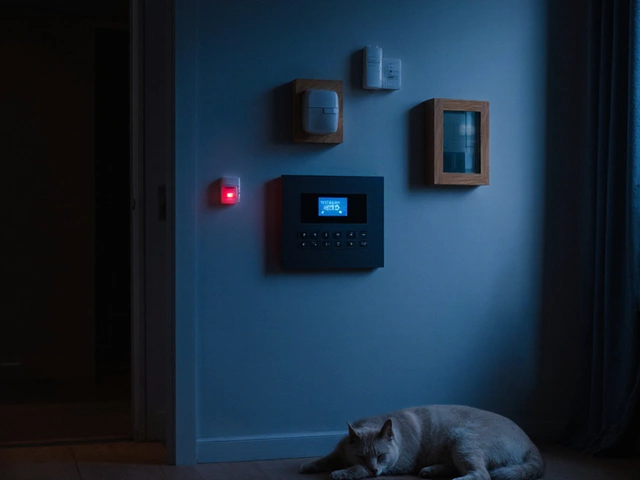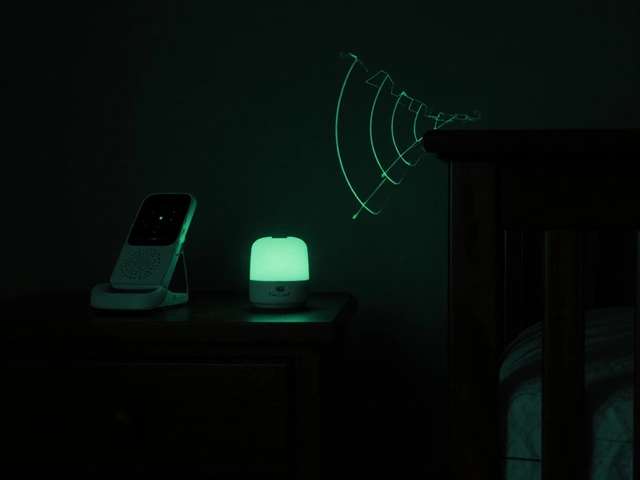Home Security Deterrents Calculator
Your Security Package Analysis
Deterrent:
Units:
Total Cost:
Effectiveness Rating:
/5Top Deterrents Overview
Alarm System
Triggers loud siren and alerts authorities when breached. Highly effective deterrent.
Security Camera
Captures video footage with night vision and motion detection capabilities.
Motion-Activated Light
Illuminates dark areas when movement is detected, disorienting intruders.
Guard Dog
Trained canine that patrols and barks at unfamiliar sounds.
Smart Lock
Digitally controlled lock that can be monitored and locked remotely.
Window Bar
Metal grille installed over windows to prevent forced entry.
Ever wondered what makes a burglar run for the hills? The answer isn’t a secret weapon; it’s a collection of everyday things that scream “you’re not welcome.”
Key Takeaways
- Visible alarms, cameras, and lights are the biggest turn‑offs for thieves.
- Combining multiple deterrents multiplies the perceived risk for a burglar.
- Smart‑linked systems let you react instantly, even when you’re not home.
- DIY installs work for basics, but professional setup boosts reliability.
- Staying updated with 2025 tech trends keeps your protection ahead of criminals.
Understanding the Mind of a Burglary
Thieves are opportunistic by nature. They scout for low‑effort targets, weigh the likelihood of being caught, and choose the path of least resistance. When a property looks “easy,” the payoff outweighs the risk. Conversely, anything that signals a strong defense raises the perceived risk and often makes the job too costly.
Top Deterrents Thieves Hate
Below are the security measures that consistently rank highest in surveys of law‑enforcement officers and burglary‑prevention experts.
Alarm Systems
Alarm System is a network of sensors and a control panel that triggers a loud siren and alerts authorities when breached. The sheer sound of an alarm can stop a break‑in within seconds, because the intruder knows neighbors and police will be on the way.
Security Cameras
Security Camera captures video footage of a property, often with night vision and motion detection. Even a dummy camera with a visible lens creates a psychological barrier; thieves avoid anything they think will be recorded.
Motion‑Activated Lights
Motion‑Activated Light turns on instantly when movement is detected, illuminating dark corners and drawing attention. Sudden brightness is disorienting and signals that the area is monitored.
Visible Signage
Security Signage includes stickers, yard signs, and window decals warning of alarms, cameras, or neighborhood watch. A clear warning forces a burglar to reconsider the risk.
Guard Dogs
Guard Dog is a trained canine that patrols a property and barks loudly at unfamiliar sounds. The bark alone can scare off an intruder before they even reach the door.
Smart Locks
Smart Lock replaces a traditional deadbolt with a digitally controlled lock that can be monitored and locked remotely. Knowing that a door can be locked from a phone eliminates the temptation to pick or force the lock.
Window Bars & Reinforced Glass
Window Bar is a metal grille installed over a window to prevent forced entry. Reinforced or laminated glass adds a similar physical barrier, making the effort to break in far greater.
Neighborhood Watch Programs
Neighborhood Watch is a community‑led effort where residents keep an eye on each other's homes and report suspicious activity. The presence of vigilant neighbors raises the odds of detection dramatically.
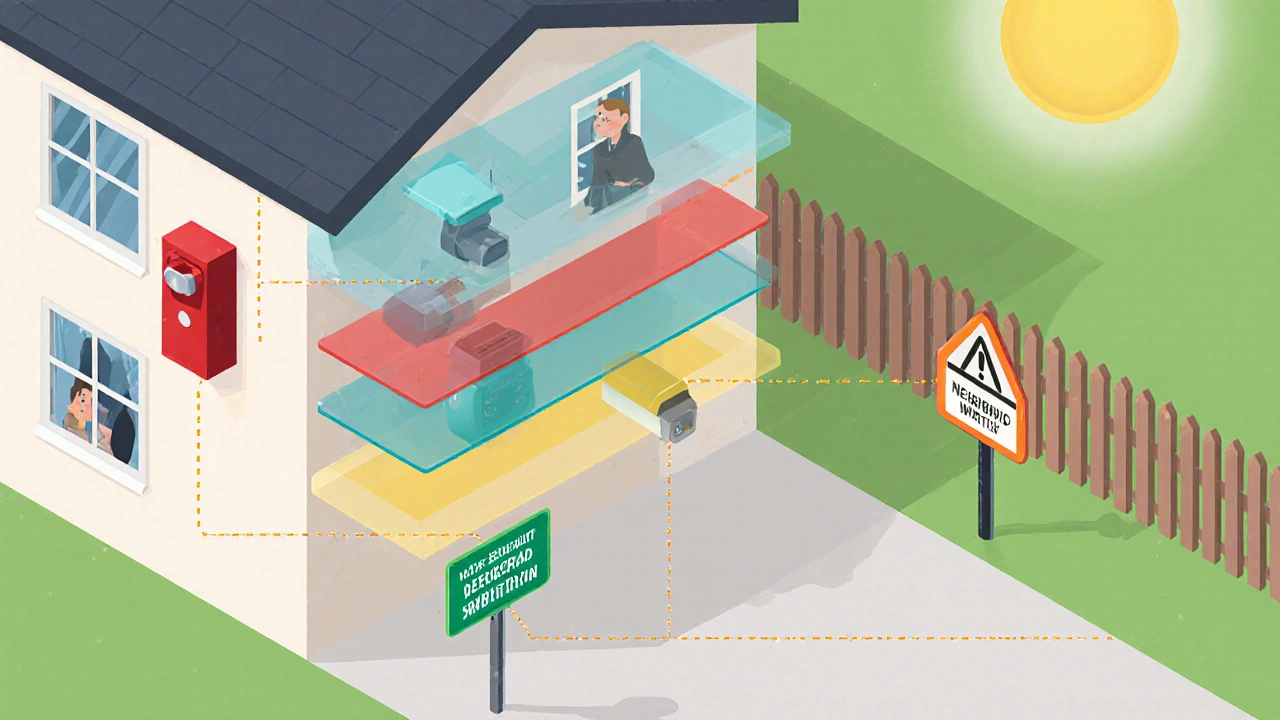
Comparing the Most Hated Deterrents
| Deterrent | Visibility to Thief | Average Cost (GBP) | Installation Complexity | Effectiveness Rating (1‑5) |
|---|---|---|---|---|
| Alarm System | High | £300‑£800 | Medium (professional recommended) | 5 |
| Security Camera | High | £150‑£600 | Medium (DIY possible) | 4.5 |
| Motion‑Activated Light | Medium | £30‑£120 | Low | 4 |
| Guard Dog | High | £500‑£1500 (training) | Low | 4.2 |
| Smart Lock | Medium | £120‑£350 | Low‑Medium | 3.8 |
| Window Bar | High | £80‑£250 per window | Medium‑High | 4.1 |
| Neighborhood Watch | High | Free (community effort) | Low | 4.3 |
Layering Deterrents for Maximum Impact
Think of security like a sandwich: each layer adds flavor and makes the whole thing tougher to bite through. A simple, cost‑effective combo looks like this:
- Install a security camera at the front door covering the driveway.
- Pair it with a motion‑activated light that turns on whenever the camera detects movement.
- Add a loud alarm sensor on any reachable entry point-windows and side doors are prime spots.
- Place a “24‑Hour Video Monitoring” sign in a visible spot to reinforce the visual cue.
- Enroll in your local neighborhood watch group to ensure neighbors report any lingering activity.
This layered approach raises the perceived risk in four ways: visual detection, audible alert, community vigilance, and the knowledge that police may be called within minutes.
Common Pitfalls and How to Dodge Them
Even the best‑planned setups can fall short if you overlook a few details.
- Blind spots. Cameras that don’t cover the side alley or garage give thieves an easy route. Conduct a walk‑through after installation.
- False alarms. Overly sensitive motion sensors trigger repeatedly, leading homeowners to ignore alerts. Calibrate sensitivity settings to ignore pets.
- Unreliable power. Relying solely on mains power leaves you vulnerable to outages. Add battery backup to alarms and cameras.
- Neglected maintenance. Dusty lenses and dead batteries reduce effectiveness. Schedule a quarterly check.
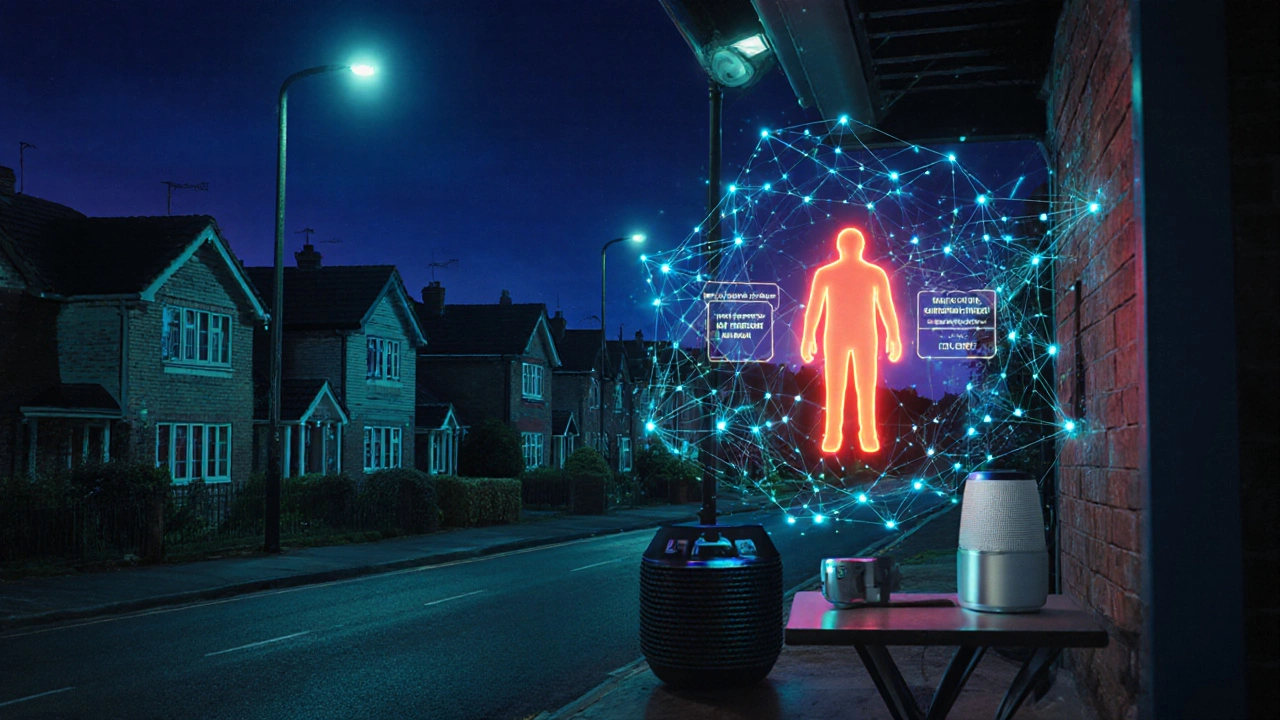
DIY vs. Professional Installation
Do it yourself if you’re comfortable with basic wiring and want to save money. DIY kits for cameras and smart locks now ship with step‑by‑step videos. However, professional installers bring three key advantages:
- They ensure optimal placement for maximum coverage.
- They integrate systems so alarms, cameras, and smart locks talk to each other.
- They provide a warranty that covers faulty hardware and future upgrades.
Choose based on budget, technical confidence, and how quickly you need the system operational.
2025 Trends Shaping home security
Technology moves fast, and 2025 brings a few game‑changers that even savvy thieves are still learning to avoid.
- AI‑Powered Video Analytics. Cameras now flag suspicious behavior-loitering, forced entry attempts-without human monitoring.
- Edge‑Compute Sensors. Motion detectors process data locally, cutting response time to under a second.
- Integrated Voice Alerts. Smart speakers announce an intrusion and can lock doors automatically.
- Community Mesh Networks. Neighbourhoods share encrypted alerts, creating a real‑time security grid.
Investing in these newer features future‑proofs your home and makes it even less attractive to burglars.
Frequently Asked Questions
Do fake cameras work as a deterrent?
Yes. Studies by UK police show that visible dummy cameras reduce burglary attempts by up to 30%. The key is placing them where they look realistic and pairing them with signs that state real monitoring.
How far should a motion‑activated light illuminate?
Aim for a 10‑meter radius covering the front pathway and any side gates. Wide‑beam LEDs with a 300‑lumens output are ideal for clear visibility without blinding neighbours.
Can a guard dog replace an alarm system?
A dog adds an audible deterrent, but it doesn’t notify authorities. The strongest protection pairs a dog with an alarm that contacts police when the door is forced.
What’s the average response time for police after an alarm triggers?
In most UK urban areas, police arrive within 5‑10minutes after a verified alarm. Quick response is why audible alarms are such a strong deterrent.
Is a smart lock vulnerable to hacking?
Modern smart locks use encrypted Bluetooth or Zigbee communication. Keep the firmware updated and use strong, unique passwords to minimize risk.

